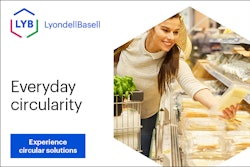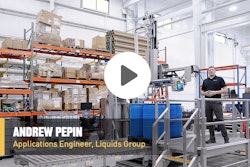Leading drug manufacturers as well as packaging suppliers are locking horns over changes to child-resistant packaging test standards. Wide differences of opinion have emerged as the Consumer Product Safety Commission (CPSC) considers a change to its test requirements for child-resistant unit-dose (U-D) packaging that was proposed by the Healthcare Compliance Packaging Council (HCPC).
While the HCPC petition has split the drug industry, the HCPC is at the same time trying to stitch the industry back together on an allied but broader issue: performance standards for child-resistant blister packaging.
Peter Mayberry, executive director of the HCPC, is chairing a task group under the American Standards for Testing and Materials International, which met for the first time in April and will meet again in October.
Mayberry is trying to line up additional packaging industry representatives who can provide technical assistance on issues such as burst strength and label adherence. Companies including Merck, Pfizer, Solvay, and McNeil all have representatives on the task group. But only Jim Kronick of Pfizer attended the meeting in Salt Lake City in April.
Currently, there are no ASTM test standards for child-resistant blister packs, according to Tom O’Toole, the ASTM staff person who works with both the D10 rigid and F02 flexible packaging committees. The D10.31 child resistance subcommittee does have 10 standards, but all apply to bottle and closure systems. Mayberry’s task group is working under the aegis of the D10.31 subcommittee.
While there seems to be general agreement within the drug industry that ASTM test standards for child-resistant blister packs are a good idea, there is no such unanimity on the HCPC petition to the CPSC.
That petition asks the Commission to toss out the current test used to determine if a blister is child resistant: If 80% of the children participating in a 10-minute test can open or gain access to eight units of a blister, or an amount that could be considered to cause “serious injury” or “serious illness,” if that number is lower than eight units – the U-D package is considered a failure.
The HCPC submitted a petition in 2003 asking that the Commission eliminate the portion of the pass/fail standard relating to “serious injury” or “serious illness,” leaving only the eight units requirement in place. The HCPC argues the current protocol discriminates against U-D packaging because unlimited amounts of a drug can be placed in a cap-and-vial closure with no consideration as to what happens if a child gets the top off. Moreover, CPSC offers no practical definition for the phrases “serious injury” or “serious illness,” so manufacturers have immense leeway when packaging toxic drugs.
The CPSC’s guidance on what constitutes “serious injury or illness” is based on testing with a 25-lb child. Douglas Bierer, vice president of regulatory and scientific affairs for the Consumer Healthcare Products Association, agrees that the CPSC guidance needs to be made more explicit.
Which road to take?
So does Kathleen Basczewski, director of compliance for Sharp Corp., a pharmaceutical contract packager. “The growth of safer unit-dose packaging in this country has also been restricted by the variability of pharmaceutical company’s interpretations of toxicity level related to the CPSC pass/fail protocol,” she says. “This imposes a degree of severity on the design, success, and expense of creating new compliant, adult-friendly, child-resistant unit-dose packages.”
However, the HCPC petition has earned as many “nays” as “yeas.” A number of drug companies and specialty drug packagers—even HCPC members--objected to the HCPC proposal, which the CPSC staff has been mulling over, and is scheduled to make a recommendation this fall.
Laurie Smaldone, senior vice president for global regulatory sciences at Bristol-Myers Squibb Pharmaceutical Research Institute, Princeton, NJ, says toxicity of the substance to be packaged should be “a critical part” of determining the pass-fail criteria for any child-resistant package regardless of whether it is packaged as a U-D or not. If the CPSC decides to ditch toxicity—that is the “serious injury” proviso--as a factor, it should adopt as its definition of test failure “any child who opens or gains access to one individual unit during the full ten minutes of testing,” she adds.
That squares with the position of Mark McMahon, chief operating officer of [b]MeadWestvaco Healthcare Packaging[n], another member of HCPC. But the organization’s membership, too, is obviously of different minds on the organization’s petition to the CPSC. MeadWestvaco markets Dosepak[tm] and Surepak[tm], two U-D packages that pass the standard advocated by Smaldone. They are called F1 packaging, for short. Many other packaging companies market F1 blisters as well.
What about nontoxics?
But Mayberry of HCPC argues that many drugs are not toxic enough to require F1 packaging, which, of course, is more expensive than ‘garden variety’ blister packages. Mayberry says he would now settle for a test protocol with a number lower than eight. “What’s important is that there be a numerical standard, be that 4, 5, 3, or 6,” he explains. “CPSC can pick a number.”
Marc Wilenzick, senior corporate counsel for Pfizer, Inc. New York, NY., while voicing the same objective as HCPC—more U-D packaging for drugs—goes in the opposite direction. Pfizer wants the CPSC to eliminate reference to any number in its standard, and keep only the “serious injury” or “serious illness” part of the definition. That would mean that a company would not have to test a blister for child resistance if the blister contained a non-toxic drug.
In fact, under current CPSC rules, drug companies do not have to test U-D packaging for child resistance. But if the CPSC tests the package, and it fails, the agency can fine the company. Ken Giles, a CPSC spokesman, declines to elaborate on how much testing the Commission actually does. But there has never been a CPSC recall of a drug because its child-resistant packaging failed to pass muster.
The HCPC petition to the CPSC originally contained a second request: that the Commission permit “type testing” of CR/U-D packaging. The Commission rejected this request. Type testing would allow a manufacturer to use a blister pack that has been tested for CR with Drug A to be used with Drug B, without testing, if Drug B is of the same toxicity as Drug A. The CPSC’s current regulations require testing of both packages.
Despite the CPSC’s rejection of type testing, the idea has considerably more support within industry than does the elimination of the “serious injury” standard in the CR test protocol. MeadWestvaco, for example, supports type testing for the most part. That is the backdrop to the formation of the ASTM task group. If the industry can come up with performance standards for CR blisters, then maybe the CPSC will change its mind on type testing, is the way the theory goes.


























